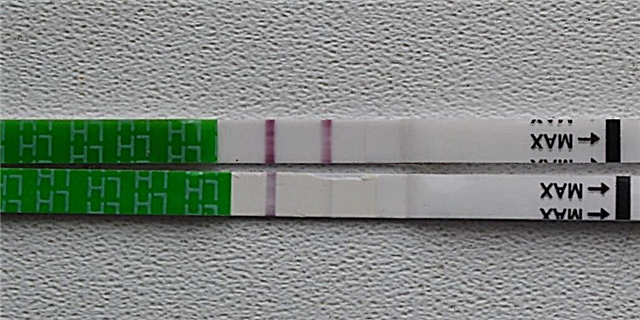
While waiting for the baby, a situation may arise when a woman will be prescribed an anticoagulant. With the risk of blood clots, there is a danger both for the expectant mother herself and for the crumbs in her abdomen, so doctors resort to drugs that have restrictions for use during pregnancy. One of them is Fraxiparine.
The opinion of doctors about the use of this medication is different. Most experts are confident that its correct use in the presence of direct indications does not threaten the fetus. And if the absence of treatment is more dangerous than the use of "Fraxiparine", such a medication should be prescribed to the expectant mother. However, there are also opponents of such a drug who prefer safer means. Anyway, it is prohibited to use Fraxiparine without a specialist's prescription.
Features of the drug
Fraxiparine is a clear, yellowish or colorless solution that is sold packaged in syringes from 0.3 to 1 ml. The therapeutic effect of the drug is determined by calcium nadroparin, and sterile water and calcium hydroxide (sometimes hydrochloric acid) act as auxiliary components. The remedy is to the group of direct anticoagulants and are sold only by prescription. Its storage is recommended at temperatures up to 30 degrees Celsius, and the shelf life of sealed syringes is 3 years.

Operating principle
The active component of the solution is a low molecular weight heparin capable of binding to a protein called antithrombin lll. As a result of this reaction, factor Xa is suppressed, which prevents the formation of blood clots. In addition, under the influence of "Fraxiparine" fibrinolysis is activated, blood viscosity decreases, and platelet membranes become more permeable.
Is it allowed during pregnancy?
The annotation to "Fraxiparine" indicates that the use of such a drug in women in the position Not recommended. Although in experiments on animals, the active substance of the solution did not have any toxic or teratogenic effect on the fetus, but there have been no studies involving pregnant women, therefore, it cannot be argued that this drug is completely safe for the fetus and does not cross the placenta.
Therefore, in the 1st trimester, Fraxiparine is usually not used either for course therapy or for prophylaxis. In the early stages, the risk of harming the embryo is highest, therefore, for most drugs during this period, serious restrictions are provided. This also applies to Fraxiparine. Therefore, if there is an opportunity to avoid the use of such an anticoagulant in the first months of pregnancy, then it should be used.
If laboratory data indicate increased blood clotting, which poses a threat to the life of the patient or fetus, Fraxiparine is prescribed even in the first trimester. Doctors have been using this remedy in their practice for a long time. and do not note teratogenic effects, but prescribe it only for health reasons.
In the 2nd and 3rd trimesters, the drug can also be prescribed only under the supervision of a doctor. In the later stages, it is permissible to inject Fraxiparine only in cases where such a medicine cannot be done without. If the doctor decided that the use of injections is necessary and the possible negative effect on the fetus is lower than the risk of worsening the health of the expectant mother, then the use of Fraxiparine will be justified.
If a woman is going to have an epidural, it is important to stop using an anticoagulant at least 12 hours before.

When is it prescribed for expectant mothers?
The main reason for using Fraxiparine during the period of childbearing is increased blood clotting... The drug is prescribed if this condition is confirmed by laboratory tests and there is a high risk of blood clots. The use of "Fraxiparine" is possible after IVF or any surgical intervention, as well as during hemodialysis and unstable angina pectoris.
The drug can be prescribed to patients with recurrent miscarriage if thrombosis is the cause. In addition, injections are used to identify placental insufficiency.

Contraindications
There are many restrictions for the use of Fraxiparine, for example, it is forbidden to inject the drug in case of bleeding or a high risk of their development. The medication is not used if the patient has undergone surgery or injury to the eyes or brain tissues. Fraxiparine contraindicated in septic endocarditis, hypersensitivity to nadroparin, severe kidney disease, intracranial effusion and some other pathologies.
Caution in the use of the solution is necessary for patients with arterial hypertension, peptic ulcer disease, hepatic insufficiency or low body weight. In addition, the doctor must control the compatibility of Fraxiparine with other medications that the woman is already taking, because many of them cannot be used simultaneously with such injections.
Side effects
A fairly common side effect of Fraxiparine is the occurrence of small subcutaneous hematomas at the injection sites. Sometimes the injected drug forms small, dense nodules that dissolve in a few days. In some patients, the administration of Fraxiparine leads to bleeding of different localization and an increase in the activity of liver enzymes. If brown discharge appears during treatment, you must immediately inform your doctor about it.

Rare side effects of the drug are called thrombocytopenia, allergies in the form of a skin reaction or Quincke's edema, hyperkalemia, redness and skin infiltration at the injection site. If you exceed the permissible dosage of the medication, it will lead to bleeding.
Instructions for use
Fraxiparine is intended for subcutaneous administration... The solution should be injected into the skin of the abdomen in turn on the right and left. In addition, it is permissible to inject the medicine under the skin of the thigh. The needle is held perpendicular during injection. With the other hand, you need to grab the skin into the fold, inject the medicine and release it without rubbing the injection site after manipulation.
Ideally, the injections will be administered by a healthcare professional. If the medication has been prescribed for a long time and the woman will have to inject Fraxiparine on her own, it is advisable to give the first few injections in a medical institution to see how to properly perform such procedures.
The dosage of "Fraxiparine" is established by a specialist taking into account the clinical picture and test results. If the drug is prescribed during the operation, the injection is performed 2-4 hours before the intervention, and then once a day for at least 1 week after the operation. For other indications, the treatment regimen will be different.
The duration of drug use is also determined individually.... For some women, injections are prescribed in a short course, for others, the solution is administered for a long time. Long-term use of "Fraxiparine" is indicated if in the past a woman had problems with gestation caused by thrombosis or thromboembolism. For such patients, a break in treatment can pose a serious danger, so they are prescribed injections for the entire waiting period for the baby, as well as when planning a pregnancy.
Reviews
On the use of "Fraxiparine" during the period of expectation of the child, there are mainly positive reviews. Among the advantages of the drug, its effective action is noted, since injections quickly thin the blood and prevent the appearance of blood clots. For many women, this drug has helped to carry a baby normally with problems with blood clotting.
The main disadvantage of the drug is called its dosage form, because the product should be injected into the abdomen, which can cause difficulties for many expectant mothers, especially with long-term treatment... Other disadvantages of "Fraxiparine" include it high cost and appearance of bruises after injections... Sometimes you get big "bumps", and to remove them, the doctor prescribes local remedies, for example, Troxevasin ointment.

Analogs
If a woman has a high risk of thrombosis and it is impossible to use Fraxiparine, the doctor will prescribe another drug from the same group of drugs, for example, Clexan. This solution works thanks to sodium enoxaparin. It has the same therapeutic effect and the same indications as Fraxiparine. The use of "Clexan" during pregnancy is permissible if the doctor sees the need for it.
In addition, sometimes doctors replace Fraxiparine with drugs from the antiplatelet group. These include "Cardiomagnil", "Aspirin Cardio", "Trombo ASS", "Sanovask" and other medicines based on acetylsalicylic acid. They prevent platelet aggregation, which reduces the risk of blood clots.
However, they are all prohibited in the 1st and 3rd trimester due to the negative effects on the fetus and labor, and in the second trimester they are used in minimal doses as prescribed by the doctor.



